chiswick timeline of writers & books: a quick guide
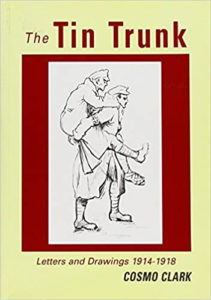 John Cosmo Clark, son of the artist James Clark, volunteered at the age of 17, saw active service with the Artists’ Rifles and was awarded the Military Cross. He drew sketches of what he saw and was also involved in the trial of a British soldier which ended with the latter’s execution. Captain Clark was the ‘prisoner’s friend’ who represented him at the court martial.
John Cosmo Clark, son of the artist James Clark, volunteered at the age of 17, saw active service with the Artists’ Rifles and was awarded the Military Cross. He drew sketches of what he saw and was also involved in the trial of a British soldier which ended with the latter’s execution. Captain Clark was the ‘prisoner’s friend’ who represented him at the court martial.
Cosmo’s war letters and drawings were sent to the family home in Bedford Park (see envelope below). In the year 2000, they were published in The Tin Trunk (right), a book compiled by his daughter, the late Julia Rhys, and her husband Stephen. With the family’s permission, we reproduce some of the images here. The originals of all the letters are on their way to the Imperial War Museum and will form part of their collection.
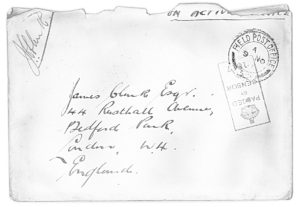 In the foreword, Julia wrote: “The tin trunk is battered and travel stained. My mother said she kept her treasures in it when she was a child… (After the war) the trunk was filled with other precious things, locked up and stored for a very long time. When she was in her eighties, my mother decided to open the trunk and look through the contents. Stored inside were letters and drawings from those years and before she died my mother began to read and choose some of the letters; she wanted to make them into a book…
In the foreword, Julia wrote: “The tin trunk is battered and travel stained. My mother said she kept her treasures in it when she was a child… (After the war) the trunk was filled with other precious things, locked up and stored for a very long time. When she was in her eighties, my mother decided to open the trunk and look through the contents. Stored inside were letters and drawings from those years and before she died my mother began to read and choose some of the letters; she wanted to make them into a book…
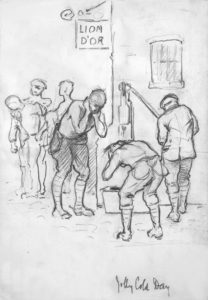 “Like most of the other soldiers, my father wrote home to his family every few days. Unlike so many, he was not killed, so the trunk held the whole story of his war. The drawings he posted him were mostly from his first year in France, but his letters go on until October 1918… Having to censor his own mail, hardly any part of the line is named, few towns are disclosed and most battles are anonymous. For anyone interested, almost all can be traced with a little detective work and some reference to Western Front and regimental history.”
“Like most of the other soldiers, my father wrote home to his family every few days. Unlike so many, he was not killed, so the trunk held the whole story of his war. The drawings he posted him were mostly from his first year in France, but his letters go on until October 1918… Having to censor his own mail, hardly any part of the line is named, few towns are disclosed and most battles are anonymous. For anyone interested, almost all can be traced with a little detective work and some reference to Western Front and regimental history.”
Click here to buy The Tin Trunk: Letters and Drawings 1914-1918
.
In October 1918, Cosmo was wounded: the news reached his family in Rusthall Avenue in the telegrams below.
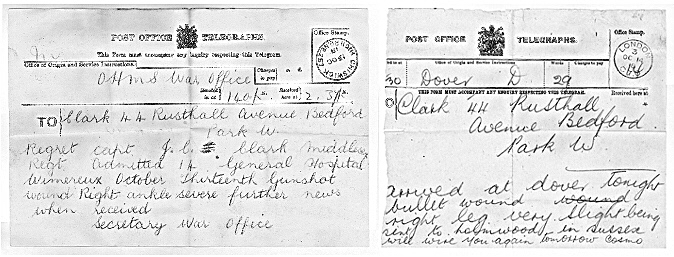
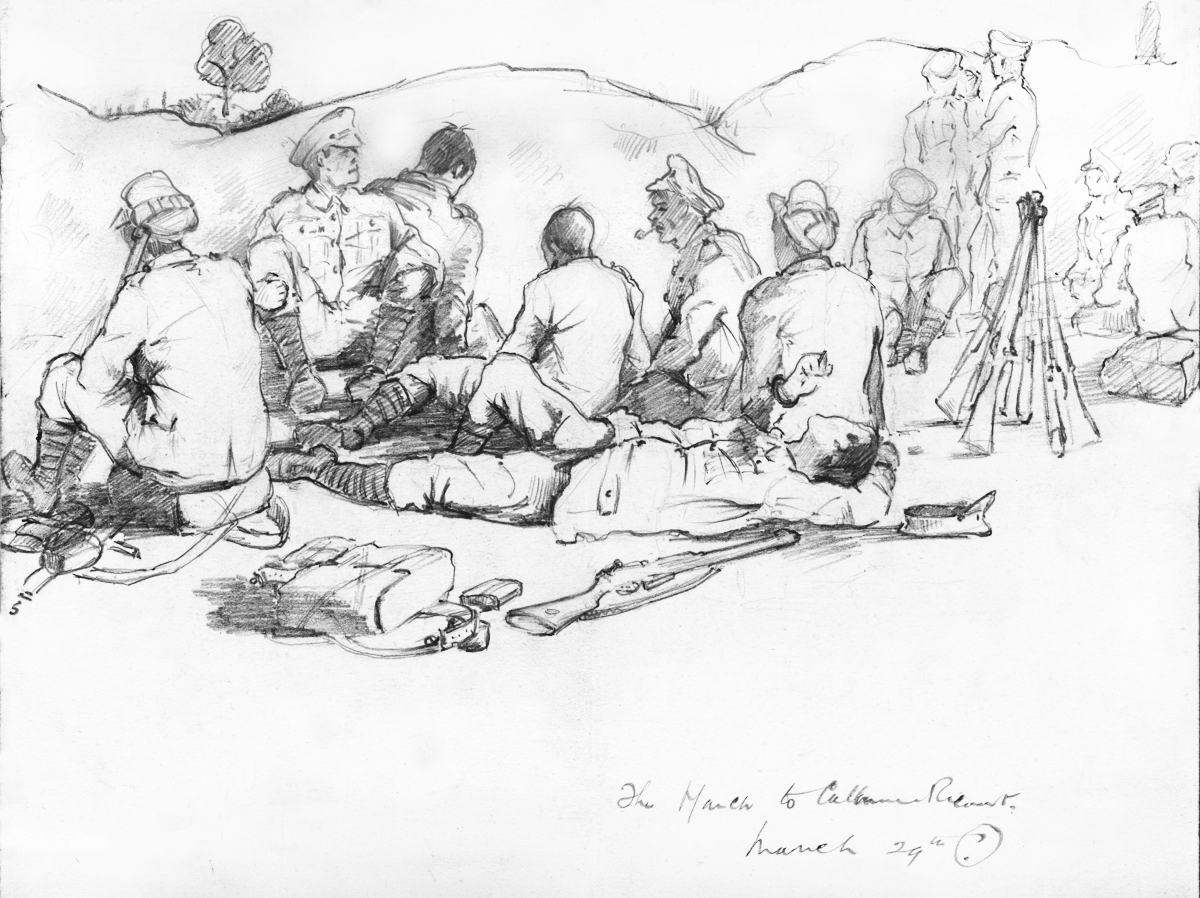
Cosmo Clark would later became a well-known artist like his father. He had begun his art studies at Goldsmiths College when war was declared. In 1938, he became head of Hackney School of Art. He exhibited at the Royal Academy, the New English Art Club and at the Royal Watercolour Society of which he was an elected member. His work is held in a range of collections including the Government Art Collection and the Imperial War Museum. In 1984, his 1950 watercolour of Cubitts Yacht Basin in Chiswick was displayed at the Patricia Wells Gallery. (See also: Where John Osborne wrote Look Back in Anger).
